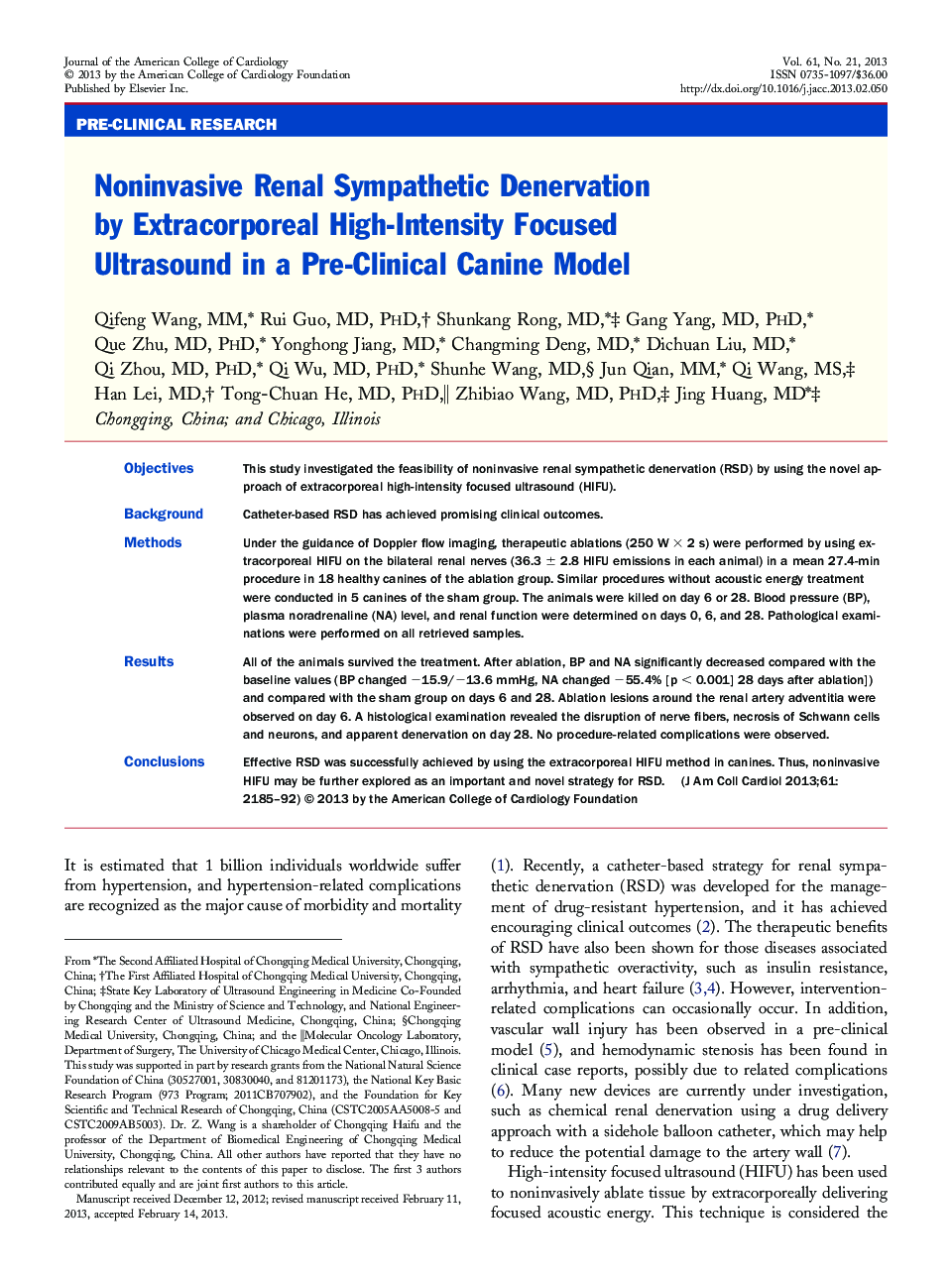| کد مقاله | کد نشریه | سال انتشار | مقاله انگلیسی | نسخه تمام متن |
|---|---|---|---|---|
| 2945514 | 1577157 | 2013 | 8 صفحه PDF | دانلود رایگان |

ObjectivesThis study investigated the feasibility of noninvasive renal sympathetic denervation (RSD) by using the novel approach of extracorporeal high-intensity focused ultrasound (HIFU).BackgroundCatheter-based RSD has achieved promising clinical outcomes.MethodsUnder the guidance of Doppler flow imaging, therapeutic ablations (250 W × 2 s) were performed by using extracorporeal HIFU on the bilateral renal nerves (36.3 ± 2.8 HIFU emissions in each animal) in a mean 27.4-min procedure in 18 healthy canines of the ablation group. Similar procedures without acoustic energy treatment were conducted in 5 canines of the sham group. The animals were killed on day 6 or 28. Blood pressure (BP), plasma noradrenaline (NA) level, and renal function were determined on days 0, 6, and 28. Pathological examinations were performed on all retrieved samples.ResultsAll of the animals survived the treatment. After ablation, BP and NA significantly decreased compared with the baseline values (BP changed −15.9/−13.6 mmHg, NA changed −55.4% [p < 0.001] 28 days after ablation]) and compared with the sham group on days 6 and 28. Ablation lesions around the renal artery adventitia were observed on day 6. A histological examination revealed the disruption of nerve fibers, necrosis of Schwann cells and neurons, and apparent denervation on day 28. No procedure-related complications were observed.ConclusionsEffective RSD was successfully achieved by using the extracorporeal HIFU method in canines. Thus, noninvasive HIFU may be further explored as an important and novel strategy for RSD.
Journal: Journal of the American College of Cardiology - Volume 61, Issue 21, 28 May 2013, Pages 2185–2192